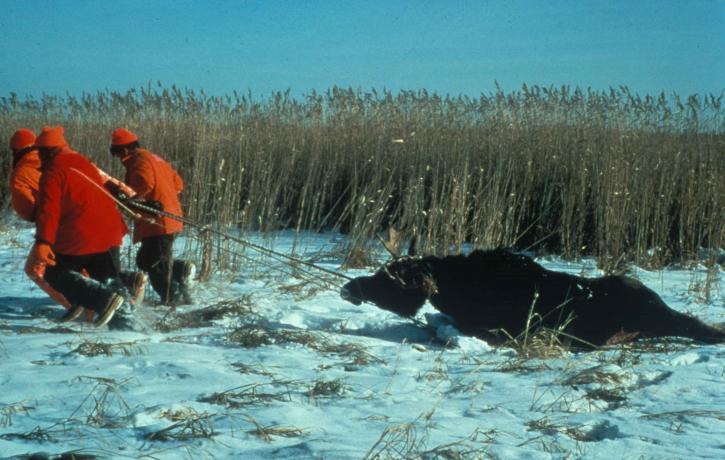You creep along in the northern woods along a lakeside in the Adirondack Mountains, looking at the ground and see the imprint of a bull moose. Your heart stops for a moment. This is a reminder that moose are coming back into the area and are finding the region their homeland once more due to more ponds and lakes building back up in New England by beavers and the forest growing back.
Moose population then and now
Back in the 1860s they had finally been extirpated for their pelts and meat, and their land cleared for human homes. None were left to live in their native abode. This wasn’t only in New York’s Adirondack Mountains, however. By 1790 they were gone from Pennsylvania, Massachusetts by the early 1800s, and by the late 19th century their numbers were dramatically low throughout New England.
Minnesota was considered a “safe zone” for moose for quite some time and especially as you headed up toward to Boundary Waters you had a good chance of seeing one of these magnificent creatures. There are two subspecies there, the northwestern and northeastern species of moose. The northwestern species has been on a freefall and while some of the cause may come from disease, it is largely due to rising temperatures. Hunting licenses have been put on hold as the government waits to see if numbers will increase. The northeastern is not on as rapid of a decline, but is still declining, and again, the government is giving the population a chance to boost its numbers before handing out the tags.
Even in the Rocky Mountains, Montana and Wyoming have noticed a decline. While partially it is thought that this is due to winter ticks and a brain worm originally found in deer, fire, and wolf populations taking the moose out as prey, one great fear is a winter tick that has been blossoming.
Further north, in the Canada and Alaska range, however, this lack of moose presence is not showing.
So perhaps the winter tick hasn’t survived the colder temperatures up there? And if that is the case, why are they tolerating the temperatures in the lower climes when before moose were able to tolerate it just fine; is the tick that far off?
Moose in urban and suburban areas
No matter where you look, however, you see in hundred of towns and cities in the paths that encompass moose territory in the United States, more and more are being found in urban and suburban areas. This can mean only one thing: too little moose territory in the woods. But what does this mean for man? Moose are very territorial, especially mothers regarding their calves. Humans are urged never to get between a mother and her calf or calves, and if they see a calf by itself, to get away because chances are Mama isn’t far away herself, and these 1000 pound, brawny, leggy animals can kill. They are also a danger in roadside areas, especially at night. They often start crossing the road and if you are going too fast, you will not have a happy encounter with one of these handsome animals. Sticking to 55 miles per hour and using your lights is the safest way to avoid hitting a moose, and perhaps save your life.
While we have to worry somewhat about our southern American moose populations dipping, it is good to know that there are enough of them that the lack of moose territory and food is bringing them into urban territory… there is enough of a presence to show that! And hopefully we can open up more territory for them in general, and can find a way to fight the winter tick that has been destroying the more southern populations of moose so depleted numbers can continue to rise, bringing a balance to the ecosystem.








